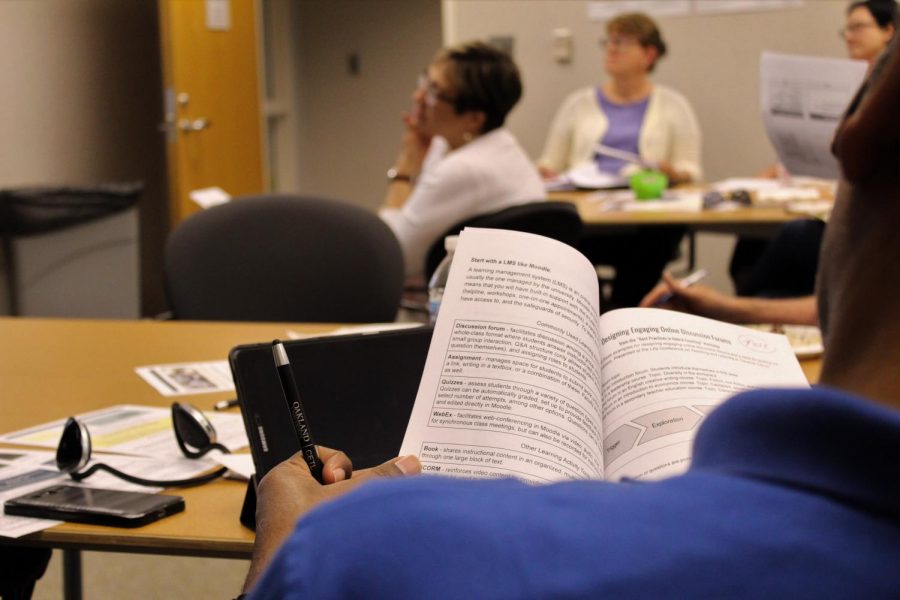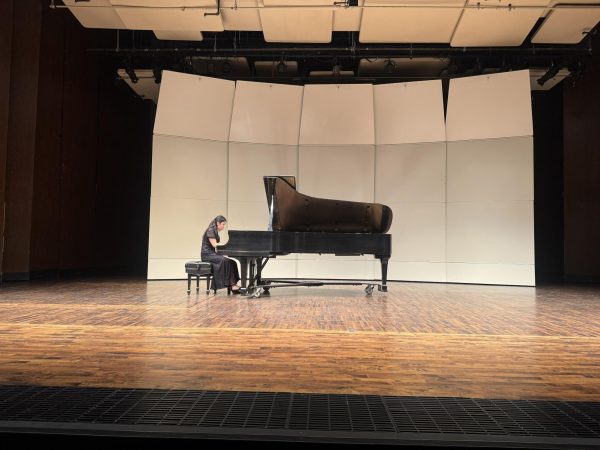OU encourages faculty to get more involved with hybrid learning
In addition to the wide variety of online and in-class courses offered at Oakland University, a third option has become more popular throughout the years, hybrid learning. Hybrid learning was first brought to OU in 2001.
These hybrid courses typically feature in-class note-taking and online forum discussions. These forums give students a chance to apply what they learned in class to different scenarios. The online portions of the class are featured through Moodle, and the Center for Excellence in Teaching and Learning (CETL) is working with faculty to take full advantage of these online teaching opportunities.
OU is also experimenting with “flipped” classrooms. These courses involve students watching videos or reading notes on the class material before class and then reviewing and discussing the material in face-to-face class meetings. This type of teaching helps professors share their information in a more interactive way while still maintaining their in-person meetings with students.
“Each department here has the opportunity to choose what courses will be offered as hybrid,” said Christina Moore, virtual faculty developer at OU. “These types of courses provide flexibility for students and faculty.”
While hybrid courses do utilize online teaching methods, it was important that they still integrated face-to-face meetings, according to Moore.
“A hybrid learning environment does not mean that students merely spend their online classes reading articles or writing essays,” she said. “Instead, online learning activities can revamp the way students and faculty interact.”
The online portion of the class enables students to learn at their own pace and formulate their thoughts without the typical pressures of an in-class environment. Hybrid courses also benefit OU’s large population of commuters, lessening the time they need to spend on campus.
“In hybrid classes, faculty receive many of the same benefits as students: variety to learning activities, opportunity to engage more students in robust discussion, more efficiency in teaching—e.g. not answering the same question multiple times—and fewer commutes to campus, among others,” Moore said.
CETL encourages professors to use the video features on Moodle to their advantage. It’s now possible to embed questions and small quizzes into videos to ensure that students are paying attention and retaining the information.
“Seventy-nine percent of students on a national level prefer online material to in-class meetings,” said Daniel Arnold, manager of Support Services at e-Learning and Instructional Support. “That percentage is consistently increasing each year.”
Based on these statistics, CETL feels that incorporating hybrid teaching into some of the courses offered at OU will be in the best interest of the professors. Hybrid courses can include video conferences, forum discussion and collaborative debates, among other features.
Forums offer students who have trouble speaking in front of large groups a chance to formulate their opinions and share them with the class.
“More and more educators are incorporating forum discussions into their courses,” Arnold said. “Having students reply to each other can really open up their eyes to different viewpoints.”
CETL hosts seminars where they provide professors with an overview of integrating hybrid learning into already established courses.
Further information about these seminars can be found on the CETL website.





